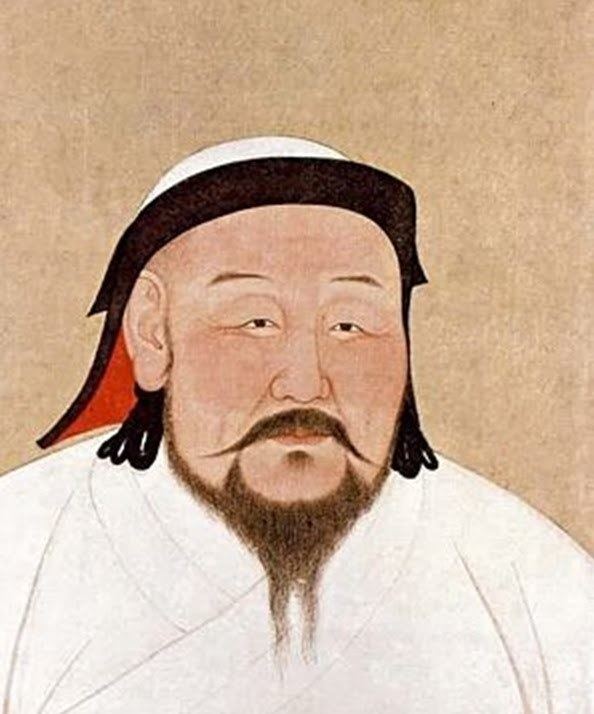Died 1292 Grandparent Anusapati | Children Gayatri Rajapatni Great-grandparent Ken Dedes | |
 | ||
Parents Wisnuwardhana, Waning Hyun Grandchildren Tribhuwana Wijayatunggadewi, Dyah Wiyat Similar Raden Wijaya, Jayakatwang, Wisnuwardhana, Hayam Wuruk, Jayanegara | ||
Kertanegara of Singasari (full name Sri Maharajadiraja Sri Kertanegara Wikrama Dharmatunggadewa), Kritanagara, or Sivabuddha, (died 1292), was the last and most important ruler of the Singhasari kingdom of Java, reigning from 1268 to 1292. Under his rule Javanese trade and power developed considerably, reaching the far corners of the Indonesian archipelago.
Contents
Background
Kertanegara was the fifth ruler of Singasari and was the son of the previous king, Wisnuwardhana (r. 1248–1268). He effectively held power from 1254 and officially succeeded his father when the latter died in 1268. The Singasari dynasty had come to power in Java following the overthrow of the previous Kediri Kingdom by Ken Arok, the first Singhasari ruler in 1222.
Kertanegara was a follower of a mystical Tantric syncretism of Hinduism and Buddhism, and presented himself as the divine god-king incarnation of Shiva and Buddha. Kertanegara celebrated many religious festivals and commissioned sculptures and metal plaques during his reign.
Conquests
Singhasari reached the height of its power during Kertanegara's rule, which saw the dramatic expansion of Javanese power into Sumatra, the Malay Peninsula, and Bali. He extended Javanese involvement in the lucrative spice trade with the Maluku Islands. He also put down rebellions in Java by Cayaraja (Bhayaraja) in 1270 and Mahisha Rangkah in 1280.
Kertanegara was the first Javanese ruler with territorial ambitions that extended beyond the island of Java. In 1284, he subjected nearby Bali to vassalage. Kertanagara managed to form an alliance with Champa, another dominant state in Southeast Asia.
Late in his reign, the Pamalayu expedition succeeded in gaining control of the Melayu Kingdom in eastern Sumatra, and possibly also gained control over the Sunda Kingdom and hegemony over the Strait of Malacca. Other areas in Madura Island and Borneo also offered their submission to Kertanegara.
Conflict with the Mongols
Following the conquest of Song China, the Mongol Yuan dynasty sought to extend its power in Southeast Asia. In 1289 Kublai Khan, Genghis' grandson, sent his own ambassadors to Java to ask for tribute. Kertanegara took grave offense to the request and arrested the envoys. He branded their faces, cut their ears and sent them back to China with disfigured faces.
Knowing that the Mongols would send a military expedition to punish him, Kertanegara tried to solidify his power. Around 1290, he launched the Pamalayu expedition to Sumatra, in order to conquer Jambi in the south, one of successor states to Srivijaya. Jambi was one of the first Indonesian polities where Islam had established its presence, and it already entertained cordial relationships with Yuan China.
Kublai Khan ordered that a strong punitive naval expedition be launched against the remote equatorial islands in order to punish Kertanegara in 1292.
Rebellion of Jayakatwang
In the meantime, Kertanegara had dominated all of Java, but before the Mongol fleet arrived, a dramatic political change occurred. Jayakatwang, prince of Kediri and one of Singhasari's most powerful vassals, rebelled against his overlord. With the bulk of the Javanese army in campaign overseas and Singasari's defence weakened, Jayakatwang seized his chance and launched a coup against Kertanegara. He launched a diversionary attack to northern East Java, where his troops drew the remaining Singhasari troops left on the island away from the capital. With Kutaraja, the Singhasari capital defenseless, Jayakatwang attacked the capital city unnoticed from the mountainous southern region.
Kertanegara was killed along with many courtiers in his palace in Singhasari in May or June 1292. Jayakatwang then declared himself ruler of Java and king of the restored Kediri Kingdom.
Among the few surviving relatives of Kertanegara was his son-in-law, Raden Wijaya, who fled to Madura Island, where he was sheltered by its regent, Arya Viraraja. Vijaya then established himself in the lower Brantas delta, where he built a settlement that would grow into the mighty empire of Majapahit.
Legacy
Raden Wijaya used the oncoming Mongol troops to overthrow Jayakatwang. Wijaya then betrayed his Mongol allies, who were exhausted after the war, drove them from Java and established Majapahit as one of the greatest empires to arise from within the area covered by the modern territory of Indonesia.
Kertanegara had no male heir, but through his daughter Gayatri Rajapatni, who married Raden Wijaya, Kertanegara became the ancestor of Rajasa dynasty, the ruling dynasty of Majapahit. His daughter Gayatri and his granddaughter Tribhuwana Wijayatunggadewi would become queen regnant of Majapahit. His great-grandson Hayam Wuruk became the greatest king of Majapahit, which under his rule became one of the greatest empires in Nusantara.
